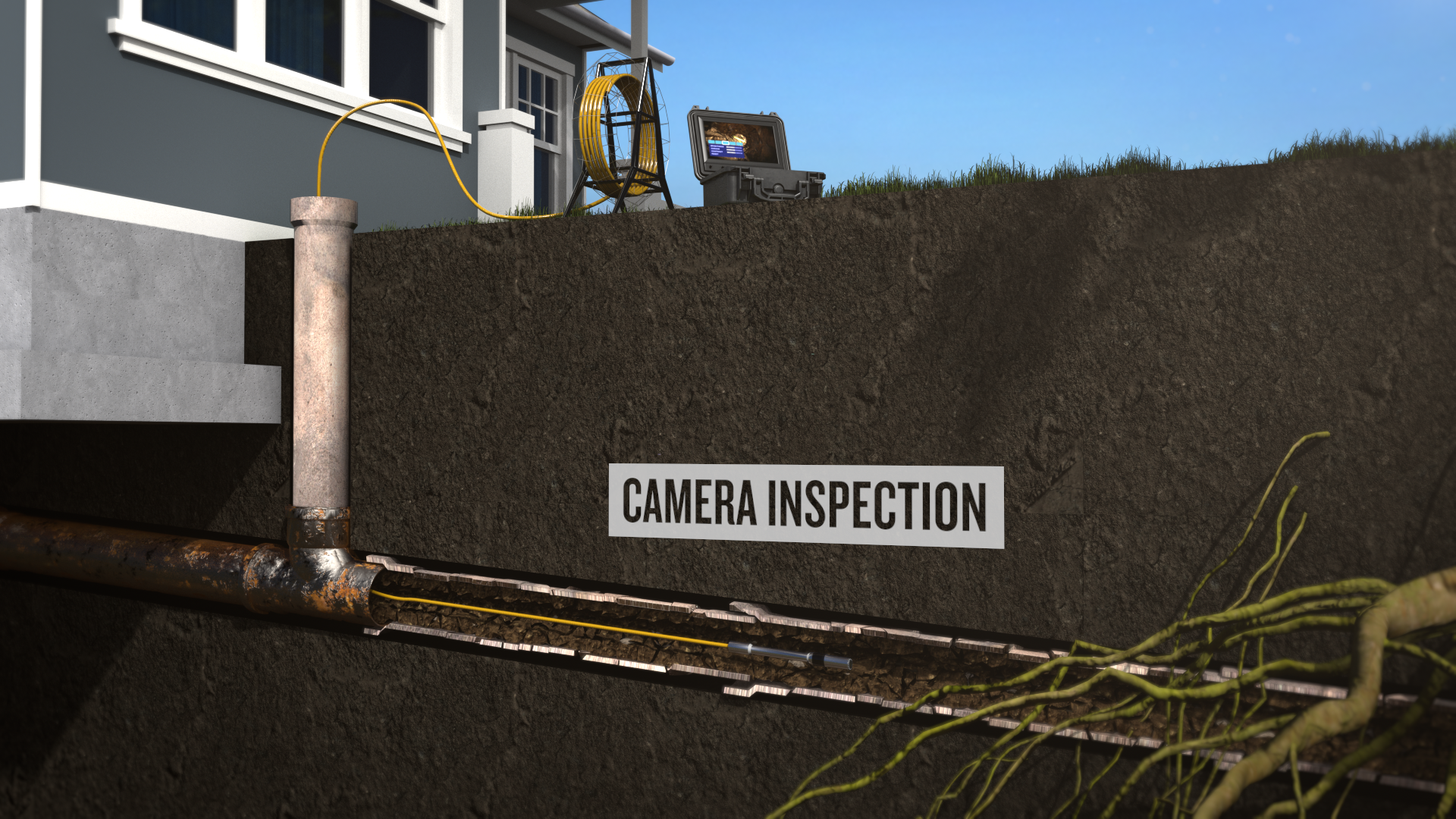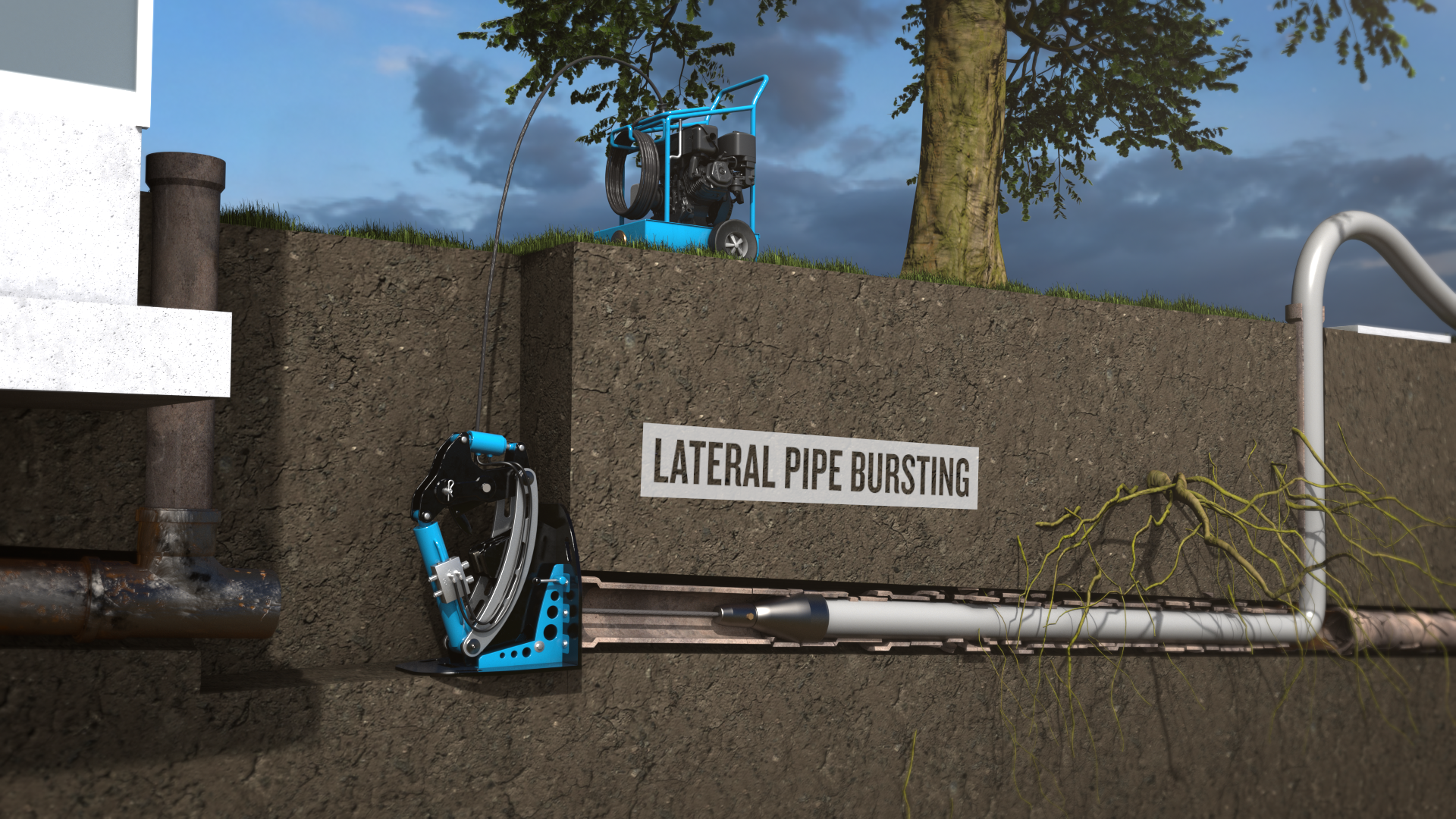Trenchless sewer repair is a fast, minimally-invasive technique for fixing damaged drainage pipes without excavation. In other words, trenchless repair allows you to fix your sewer pipes without trenching through your flower beds or living room.
This article will cover the basics of sewer lines, traditional sewer repair, trenchless repair, the benefits of trenchless sewer repair, and more.
For more information see, How Hydro Jetting A Sewer Line Works.
Your Home's Sewer Line
Your home's sewer line carries wastewater - from sinks, toilets, showers, etc. - away from your home. If your home is connected to a city sewer system, you have a pipe running from your house to the street where it connects with the main sewer line. This pipe - from your home to the street - is called the sewer lateral, and it's your responsibility to repair it if it gets clogged or damaged.
What is Traditional Sewer Repair?
Repairing a sewer line using traditional sewer repair means digging long trenches to access the damaged pipe. All too often, it means digging up flower beds, breaking up concrete pavement, and even trenching through living rooms in some cases. Traditional sewer repair is invasive and often takes a week or more to finish. When the repair is done, the property owner has to pay to put everything back together again. Cleaning up after traditional sewer repair is often more expensive than the repair itself.
What is Trenchless Sewer Repair?
Trenchless repair is a method of fixing a damaged sewer line without digging trenches through your property. The only digging required is two 4' x 4' pits to get at the pipe. Because trenchless repair is minimally-invasive, there are no clean-up costs.
Trenchless repair is also fast. What traditional sewer repair accomplishes in days or weeks, trenchless repair can get done in hours.
The first step in any trenchless sewer repair - pipe lining, spray lining, or pipe bursting - is using a CCTV sewer camera to look inside the pipe to see the type, severity, and location of the problem.

Types of Trenchless Sewer Repair
Pipelining
Pipelining involves fixing a damaged sewer line by creating a new pipe within the old one using epoxy. It works as follows…
An epoxy-soaked liner containing an inflatable bladder is inserted into the damaged pipe. When the bladder is inflated, it presses the epoxy-soaked liner up against the inside of the pipe. After it cures for a few hours, the bladder is deflated and removed, and the pipe is like new. Repairs made using trenchless pipelining will last up to 50 years.
Spray lining
Spray lining is similar to pipelining but involves using a flexible polymer or epoxy sprayed (or sometimes brushed) inside the pipe.
Pipe bursting
Sometimes, a sewer pipe is too damaged to be fixed using pipelining. In these cases, pipe bursting might be an option. The repair is made by pulling a brand new HDPE pipe through the damaged pipe and replacing it.

Is Trenchless Repair Better Than Traditional Repair?
Yes, because trenchless repair enables us to quickly repair damaged sewer lines without destroying property and without clean-up costs. However, sometimes trenchless repair is impossible, and traditional sewer repair is the only option. For example, trenchless sewer repair is impossible with collapsed or back-pitched pipes.
How Long Does Trenchless Repair Take?
The time needed for trenchless repair depends on what needs to be done. For example, if it's pipelining, how many pipes will need to be lined? A general rule of thumb is one pipelined per day.
Benefits of Trenchless Repair
The benefits of trenchless repair include:
- It's fast - One pipe can be lined per day using trenchless repair. It could take days to repair one pipe - or longer - using traditional sewer repair.
- It's cost-effective - At first, you might think trenchless repair is more expensive than traditional sewer repair. That's because you're not including the cost to repair the damage created by traditional repair methods. Many times, the cost to repair the damage is greater than the cost to repair the pipe.
- It's minimally invasive - With trenchless repair, it isn't necessary to dig up your flower beds or trench through your living room to get access to the pipe. All that's needed are two 4'x4' access pits to get at the pipe.
- It lasts a long time - Pipe lining repairs can last up to 50 years, and the HDPE replacement pipes used in pipe bursting can last up to 100 years.
Can All Sewer Line Problems Be Fixed Via Trenchless Repair?
No, not all sewer line problems can be fixed via trenchless repair. For example, a back-pitched pipe or collapsed pipe will need to be repaired using traditional sewer repair methods.
There are also times when trenchless repair might work, but it wouldn't be cost-effective. For example, you might have a damaged pipe that's easy to access because it isn't buried deep. Yes, trenchless repair could be used, but what would be the point? Digging up the pipe and using traditional sewer repair methods might be less expensive.
How Much Does Trenchless Repair Cost?
The cost of trenchless repair depends on the type of problem, the severity, the chosen repair solution, and your geographical location. While trenchless repair may seem more expensive initially, you'll need to remember that there are almost always no clean-up costs.
If you're having problems with a sewer line and you're in our service area in Benicia, CA, contact us today to find out if trenchless sewer repair will work for you.




